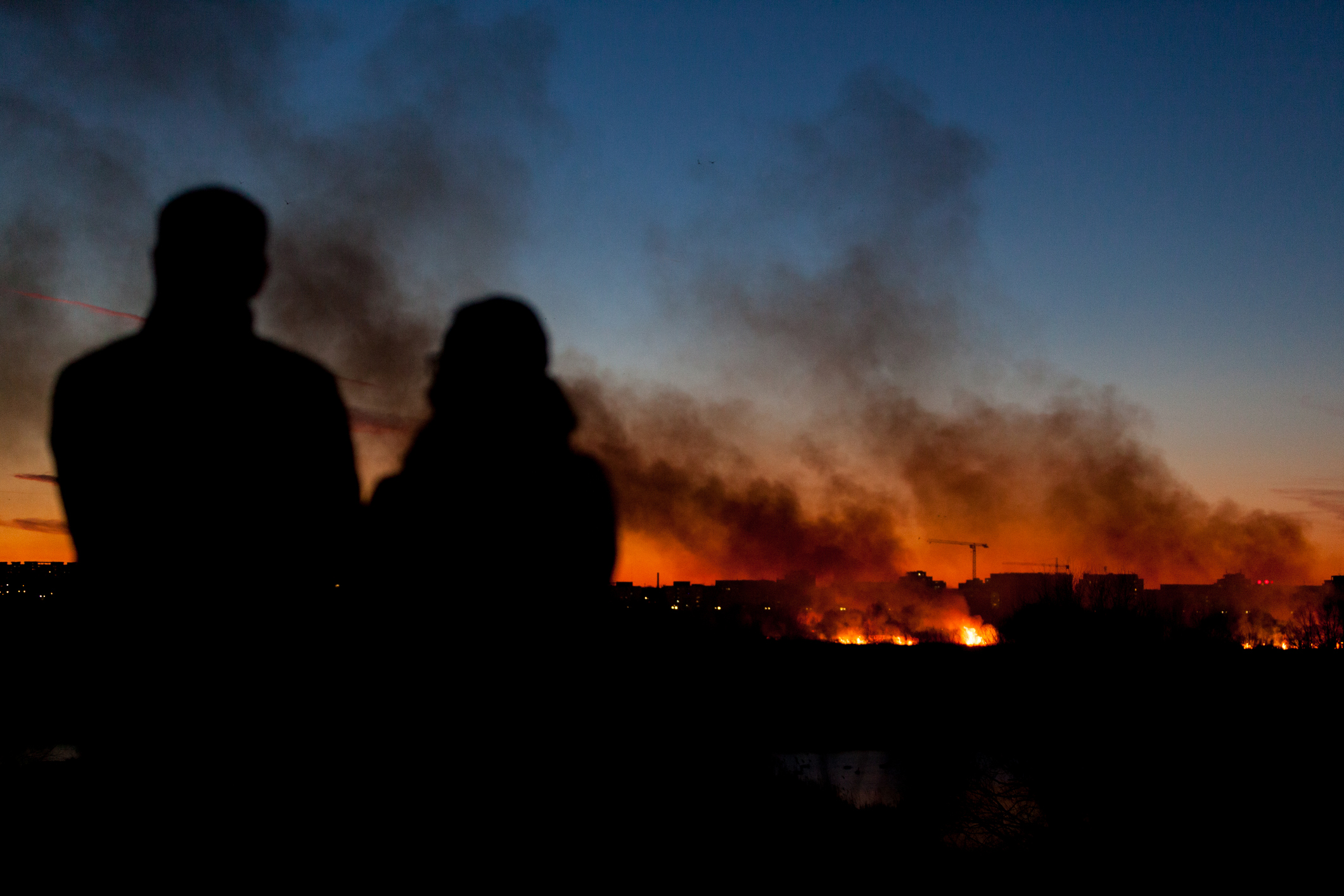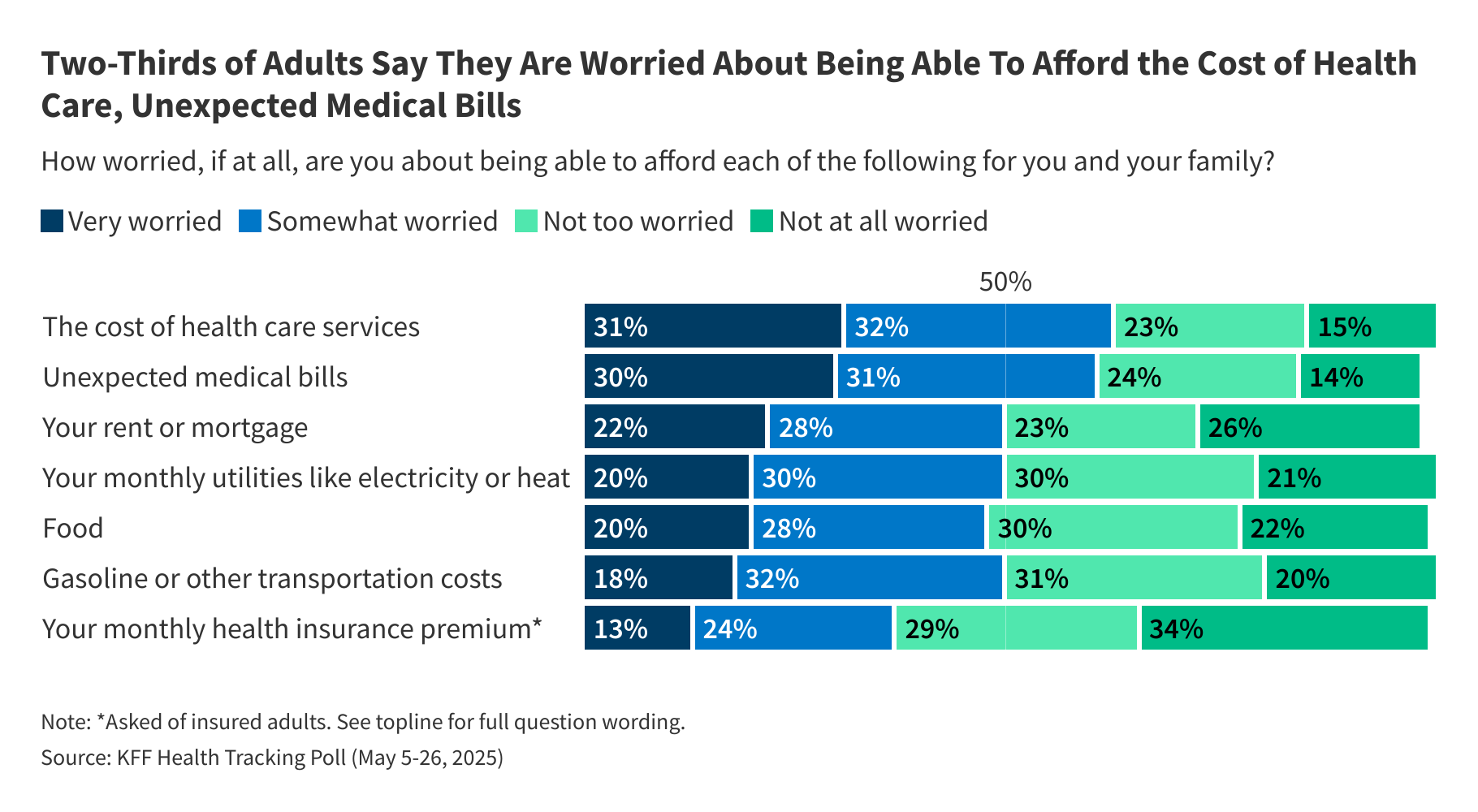Fires are wreaking complete havoc in Los Angeles. Hurricanes and floods caused death and destruction from Florida to North Carolina last Summer. Extreme high and low temperatures make life more difficult throughout the United States all year. When you think about risks to your retirement, you may want to go beyond inflation rates and stock market fluctuations to include climate and natural disasters when planning for your financial and overall well-being.
Bomb cyclones, record high (and low) temperatures, atmospheric rivers, polar vortexes, super storms, thundersnow, heat domes, derechos, and firestorms are new and increasingly frequently used terms for describing extreme weather and the impact it has on where we live.
According to the National Oceanic and Atmospheric Administration, the last 44 years have seen a dramatic increase in the annual average of weather-related events that caused at least $1 billion in damages.
In 2024 (as of November 1), there were 24 confirmed weather/climate disaster events with losses exceeding $1 billion each to affect the United States. These events included 17 severe storm events, 4 tropical cyclone events, 1 wildfire event, and 2 winter storm events.
Here is the data on how quickly these events have increased:
- In the 1980s there was an average of 3.3 events with losses exceeding $1 billion each
- The 1990s saw 5.7 events of that magnitude
- In the 2000s it grew to 6.7 events
- The average number of devastating events almost doubled to an average of 13.1 in the 2010s
- The number has exploded again over the last 5 years – 2019 through 2024 – saw an average of 20.4 events a year, with 28 events in 2023 and 24 in 2024
Planning for Your Future in an Era of Climate Disaster
You may want to seriously consider the possible impact of climate and natural phenomena on your long-term health and financial well-being as you look toward retirement.
How can you plan your life and finances for possible climate disasters?
Here are 11 considerations about climate-related disasters and how to prepare for a wealthier, healthier future:
1. Foster an Attitude of Resilience
Resilience is the capacity to adapt, recover, and thrive in the face of adversity, challenges, or significant stress. It is critical to navigating the unprecedented challenges facing individuals, communities, and ecosystems.
Developing resilience involves:
- Mindset: A growth mindset and mental toughness can help you view challenges as opportunities for learning and improvement, enabling you to adapt to adversity with greater confidence.
- Strong social connections: In the 1990s my aunt and her family survived Hurricane Iniki. While they were without power for months, they remember the time as one of the best of their lives because of how the community came together and helped each other. Emotional support and practical resources from family and friends during tough times will reinforce a sense of belonging.
- A good foundation in mental and physical health: Prioritizing self-care through regular exercise, a healthy diet, mindfulness practices, and sufficient rest strengthens both physical and mental resilience. You’ll do better to manage stress and recover from setbacks if you are physically and mentally as strong as possible.
As best-selling author Jim McCarthy told Boldin CEO Steve Chen, the secret to mental health as we age is to build better habits that lead to mental and emotional resiliency. Though some people seem more like orchids than dandelions, McCarthy says we can all develop skills for self-preservation and flourishing if we are mindful and take it one step at a time.
Preparing yourself for whatever life may throw your way is an important part of retirement planning.
2. Think Carefully About the Region Where You’ll Retire
Perhaps the most obvious climate change consideration with regard to your retirement is where you choose to live.
The traditional retirement destinations of Arizona and Florida may no longer be the best option. Arizona is forecast to be deathly hot and there is the risk that Florida will be underwater.
However, no area may be “safe.” Globalchange.gov reports that most regions across America could be impacted by climate change:
Northeast: “Communities in the Northeast are affected by heat waves, more extreme precipitation events and coastal flooding due to sea level rise and storm surge.”
Southeast: “Decreased water availability, exacerbated by population growth and land-use change, causes increased competition for water in this region. There are also increased risks associated with extreme events such as hurricanes.”
Midwest: “Longer growing seasons and rising carbon dioxide levels increase yields of some crops, although these benefits have already been offset in some instances by occurrence of extreme events such as heat waves, droughts, and floods.”
Great Plains: “Rising temperatures lead to increased demand for water and energy and impacts on agricultural practices.”
Southwest: “Drought and increased warming foster wildfires and increased competition for scarce water resources for people and ecosystems.”
Northwest: “Changes in the timing of streamflow related to earlier snowmelt reduce the supply of water in summer, causing far-reaching ecological and socioeconomic consequences.”
3. Assess If Climate Change Will Impact the Overall Economy
The cost of natural disasters is staggering.
The National Oceanic and Atmospheric Administration estimates that natural disasters have cost the U.S. economy over $2.785 trillion since 1980, and they have become more frequent and costly.
The U.S. Commodity Futures Trading Commission’s 2020 report “Managing Climate Risk in the U.S. Financial System” says that “a central finding of this report is that climate change could pose systemic risks to the U.S. financial system.” The last “systemic risk” to the financial system was the financial crisis of 2008 that destroyed the savings of millions of Americans.
The report goes on to say, “a sudden revision of market perceptions about climate risk could lead to a disorderly repricing of assets, which could in turn have cascading effects on portfolios and balance sheets and therefore systemic implications for financial stability.” In plain English, that means:
- Stock and financial market crashes
- Insurers and providers of financial products (like an annuity) could go out of business
- Pension funds could go bust
- Hyper-inflation and deflation of the entire range of financial assets is more likely
- Taxes could rise to fund natural disaster response (and make up for lost revenue from lost jobs and industries)
- Your job could go away
- Bonds held from states impacted by climate change might not hold value
You may want to think carefully about your own money, investments, and lifestyle in light of these economic possibilities.
4. Review How Climate Change Could Impact Your Own Investment Portfolio
People planning for life in the 2030s and beyond should consider the risk climate change poses to their portfolios. Protecting your investment assets over the next two decades will require checking in with your retirement plan often to make sure you know your exposure to companies, industries and sectors that are unprepared for the future.
And, it isn’t just oil, gas, and insurers who are at risk. FourTwentySeven has done extensive research on the broad effects of climate change on businesses. They determined that the top five companies most at risk to have their businesses disrupted by climate change were a cruise line, a technology hardware and equipment company, a chemicals company, a major utility, and a semi-conductor chip company.
Because climate change affects so many companies, from natural resources to office space in flood zones, investors have to take a hard look at the companies where they put their money.
Strategies:
There is no lack of investment strategies. Here are a few considerations:
Diversification: Diversification is always a good bet when it comes to investing and reducing climate-related risks is no exception. Index funds may be your best bet, as always.
Think about companies that are investing for a better environment: Many investors, including big, institutional investors like Blackrock, which has approximately $6.47 trillion of assets under management, have started to analyze companies according to how good they are to the environment, their employees and the people in their communities.
- You can do your own research on how a company scores in terms of its sustainability at Sustainalytics.com, a subsidiary of the analysis firm Morningstar.
- Consider investments in renewables, electric vehicles, and green bonds
Anticipate volatility: Some experts also believe that projecting hefty investment returns into the future may be overly optimistic. You may want to be extremely conservative with your overall rate of return projections.
Perhaps Think About Companies That Make a Positive Difference
But it’s not all doom and gloom! There are two sides to every coin, and in this case, you can use your investing power and the money you’ve saved to invest in companies that might thrive with climate change.
5. Plan for Health Impacts Wherever You Live
Extreme heat and cold can be kind of invigorating when you are young, but increasingly deadly as you age.
Protecting yourself from the health impacts of climate change should probably be a priority. No matter where you live, you are likely to experience some kind of increased medical risk.
According to the Medical Society Consortium, climate change is increasing the risk of heat related illness and worsening of chronic illnesses. There will also be an increasing likelihood of death from dangerous weather events and diseases from mosquitoes and ticks.
Sickness from food and water will become more prevalent as well as more mental health problems.
6. Review Your Household Budget and Inflation Projections
Inflation and deflation are among the biggest risks to retirees. Climate disasters can often impact farming making your grocery bill particularly concerning over the long haul. The price of eggs may never actually come down and possibly keep going up.
The Global Sustainability Institute’s research believes that food prices could increase significantly by 2040. In fact, their reporting suggests that food already costs twice as much now than it did in 2000.
7. Assess Your Existing (and Future) Home for Risks
It appears that more and more people are thinking about climate-related disasters when they determine where to live (and what they will pay to live there).
An analysis from University of Pennsylvania researchers found that the sales volume of homes in areas where 70% of developed land was less than 6 feet above sea level dropped by up to 20% between 2013 and 2018 and prices declined between 2018 and 2020. And, sales rose on less-vulnerable land.
And, analysis from Redfin, an online real estate company, found that when people have access to information on flood risks, they are likely to use that information to price what they are willing to pay for the home. Redfin users who viewed homes with an average flood-risk score of 8.5 (severe/extreme risk) prior to the study went on to bid on homes with an average score of 3.9 (moderate risk) after gaining access to flood-risk data—a decrease of 54%. By comparison, users who viewed homes with an average score of 8.5 before the study but did not get access to risk data went on to bid on homes with an average score of 8.5.
Wondering about your current home? Or, where you might relocate for retirement? Here are some resources to help you assess where to live:
Risk to a Specific Address: Climate Check and Risk Factor enable you to enter your address and discover potential risks.
Future temperatures: This interactive tool projects what the climate will be like 60 years from now. Enter any U.S. city and it will describe a likely future for that location.
Earthquakes: The United States Geological Survey has hazard maps for earthquakes
Fire risk: Search for where fires have occurred or if your location is in the wildland-urban interface, fire prone areas.
Sea level rise: Look up if your city is prone to flooding from sea level rise.
Floods: The Federal Emergency Management Agency and the National Flood Insurance Program maintain flood maps.
8. Be Mindful of Home Insurance Costs
Homeowners’ insurance coverage varies greatly depending on where you live. You may require supplemental coverage to protect yourself from specific kinds of damage, but specialized insurance is becoming more costly, if available at all. Learn more about how to reduce insurance costs.
Insurers may not be pricing in the impacts of climate change into their offerings. As such, they may not be able to pay out when natural disaster strikes.
Cynthia McHale, director of the insurance program for Ceres, a nonprofit group that pushes investors to pay attention to the financial risks of climate change, said in an interview earlier this month that neither insurers nor their government overseers have a good handle on the risks that climate change poses to insurers’ various financial assets. McHale compared the situation to the one faced by big banks in 2008, when few sufficiently realized the magnitude of potential losses from the U.S. property bust.
What’s worse is that insurers may also cease to provide certain types of coverage in certain areas. In California, some homeowners are finding that they are being denied fire insurance if their home is too close to rural land.
Depending on where you live, you may want to think through self-insurance. At the very least, you will want to invest in the best insurance possible for your particular financial profile.
Home equity is usually the most valuable asset for any household. Protecting that equity from climate-related disasters is important if retaining that wealth is a financial goal. It is even more important if you are planning on using your equity to help fund retirement costs.
You may have your heart set on the dry, warm weather in Arizona or the pleasant tropical breezes coming off the Gulf in Florida, but in ten to twenty years the cost of keeping comfortably cool in the Arizona desert or hurricane-proofing your house in Florida may be more than you budgeted for.
When planning where to retire, consider the costs of protecting yourself from severe weather and possible disruptions to services that may result from those events. Not only should you factor in the cost of state-mandated flood insurance in Florida, but you should also make sure your current home (or your new home if you relocate) is ready for whatever disasters might come your way.
Where you live now is critical to your finances and well-being, but is your location ideal for your future self? Take a minute to imagine who you will be 5, 10, 30 years from now. And, imagine what you will need and want to thrive at that age.
Sure, shoveling snow is a pain, but you can do it now. What about 10 years from now? In another 20 years will you rely on a medical device that depends on electrical service? If your waterfront home floods, will you want to rebuild at 85?
Research suggests that imagining your future self is a good way to help you adequately plan and prepare for your future.
11. Have a Disaster Plan in Place
A great plan isn’t rigid and written in stone. A great plan is flexible and takes into account many contingencies. But, no matter where you live, you really need a plan, especially for the possible immediate impact of a disaster. These plans should include:
Emergency Funds: Many advisors recommend building up six months’ worth of emergency savings to cover unexpected job loss or other financial emergencies.
Evacuation Plans: It is important to have a written list of how you are going to evacuate and what you need to do and get out of the home if you have to leave.
Sheltering in Place Plans: In addition to evacuation plans, you also want to have supplies on hand to sustain you if disaster strikes but you are able to stay home.
Communication and Reunification Plans: Make sure you have documented the telephone numbers of people important to you (in case you don’t have access to your phone) and where to meet up if you are separated from family members.
Climate Disaster Scenarios to Try with the Boldin Retirement Planner
Part of planning for your future well-being is to anticipate what might go wrong. Here are a few disaster-related scenarios to try with the Boldin Retirement Planner:
Budget Changes: Try thinking through the details of your future budget with your mind on both your future self and climate disasters can be an excellent way to anticipate future needs and how you can accommodate them.
Relocation: See the impact on your cash flow, taxes, and more if you relocate.
- Model the relocation in My Plan > Home and Real Estate
- Update your budget projections with insurance, heating, cooling, and other cost changes that might occur due to the move.
- Really think through the lifestyle implications – good and bad – of moving (and staying put). And, assess the financial impacts.
Investment Returns: The Boldin Retirement Planner enables you to assess your plan in multiple ways. You may want to review the following with climate-related disasters in mind:
- Optimistic, Pessimistic, and Average Plan Projections: Most of the charts you see throughout the app are based on what you have projected for optimistic, pessimistic, and average returns. PlannerPlus users can modify these projections and you may want to run a specific worst case scenario for returns.
- Monte Carlo analysis is a statistical technique where we run multiple projections, randomly varying asset returns and inflation rates based on your growth rates and a normal distribution. This is a widely accepted way of projecting risk.
Property Loss: Some people may want to run a scenario where their property is destroyed or severely damaged.
Publisher: Source link









